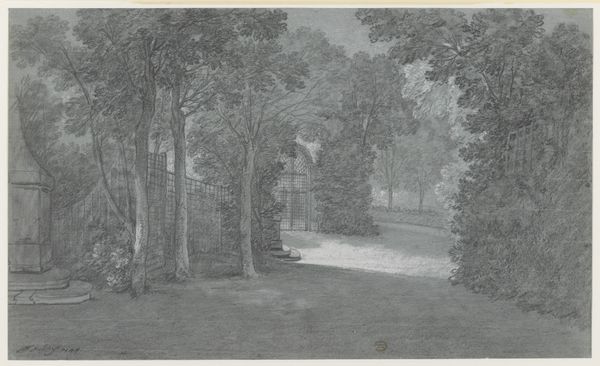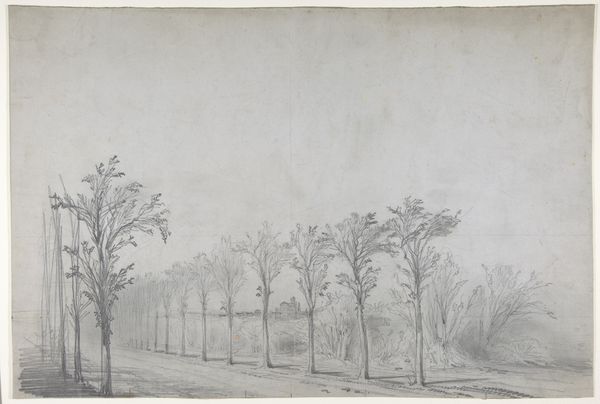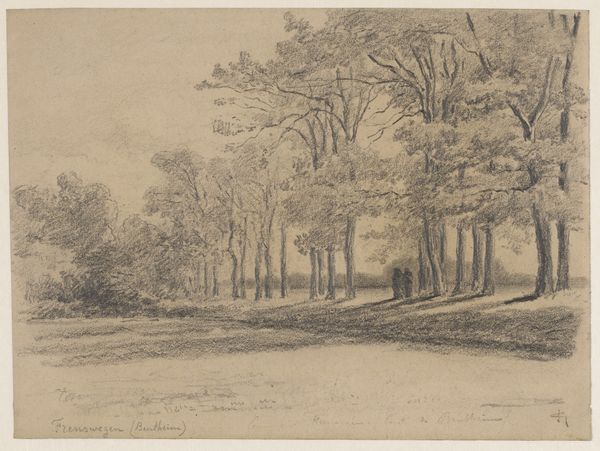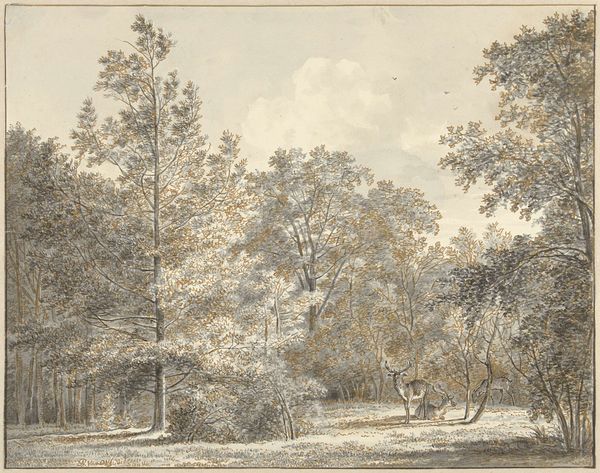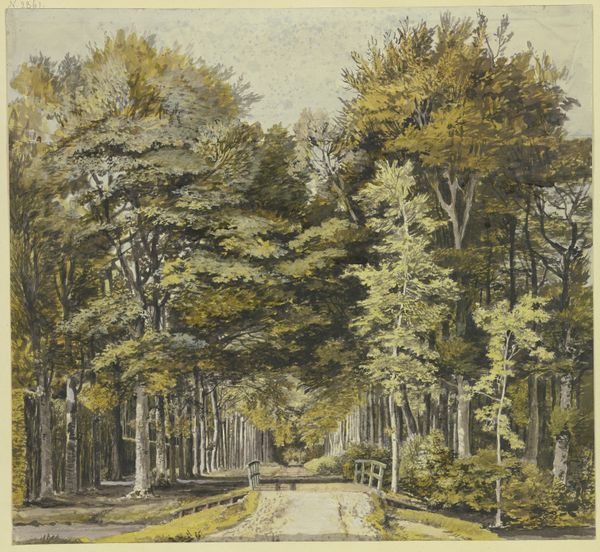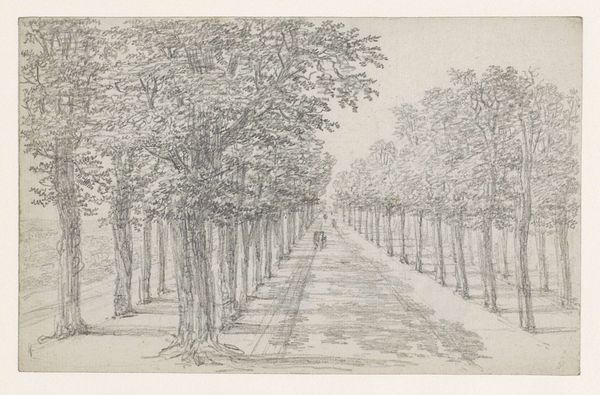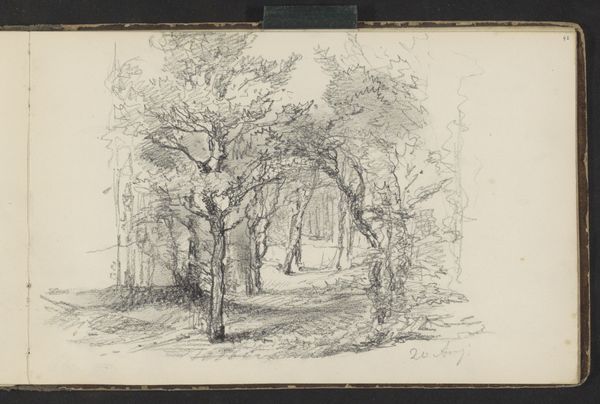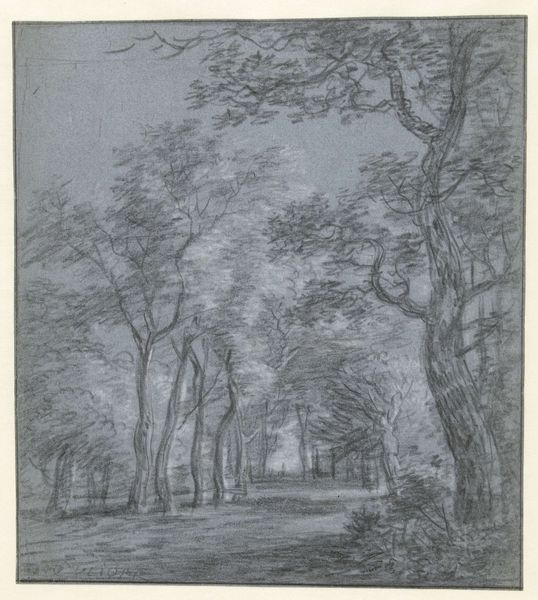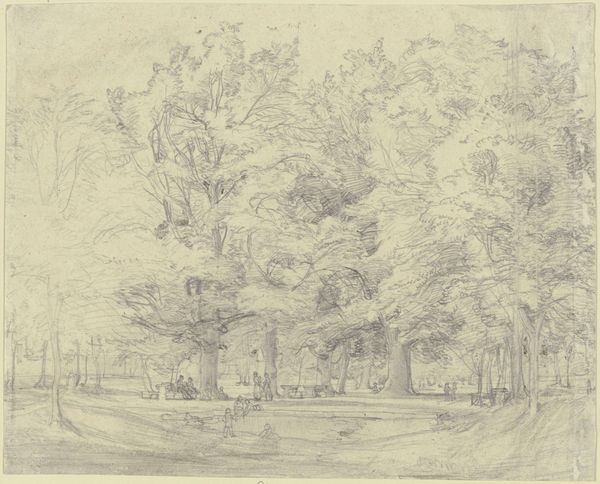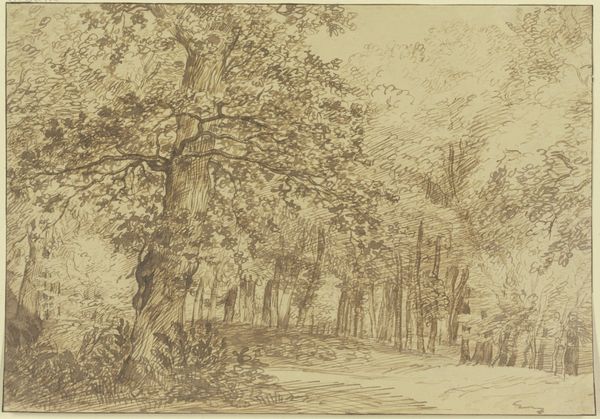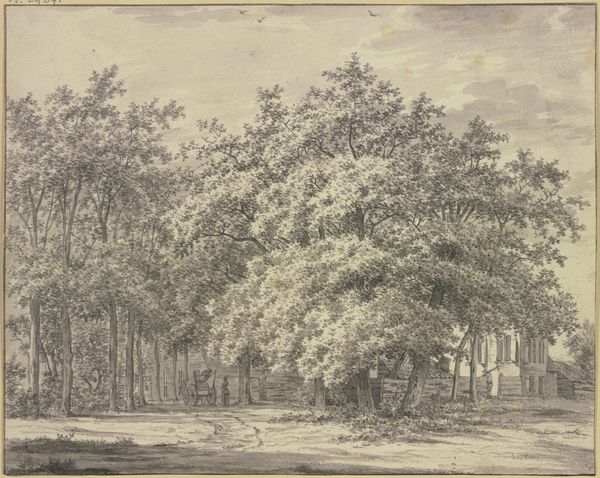
drawing, print, plein-air, paper, pencil, chalk, charcoal
#
drawing
#
baroque
# print
#
plein-air
#
pencil sketch
#
landscape
#
paper
#
pencil
#
chalk
#
charcoal
Dimensions: 303 × 522 mm
Copyright: Public Domain
Editor: Jean-Baptiste Oudry's "View of the Park at Arcueil," created around 1744 using pencil, charcoal, and chalk on paper. The drawing strikes me as a study in controlled nature. The lines are so deliberate, so planned. What story do you think this landscape is trying to tell? Curator: Well, Oudry's choice to depict this park in such detail speaks to the changing relationship between the aristocracy and nature in the 18th century. Formal gardens like Arcueil were not just spaces for leisure; they were expressions of power and control. Editor: So, the carefully arranged trees and precise fountain aren't just about aesthetics? Curator: Exactly. These gardens reflected a worldview. Consider, landscape architecture was a crucial tool for displaying power in visual terms, as were estate management and hunting practices. Who controlled land use, dictated its representation in art. This piece also shows Oudry embracing "plein-air" or outdoor sketching which contributed to the creation of the more naturalistic gardens that would become en vogue in the 19th Century. How might the artistic representation of public parks democratize similar cultural aspirations, but outside of a system that excludes people from power? Editor: That’s a great point. Seeing it this way, the drawing becomes less about a beautiful landscape and more about the ideologies embedded within it. Thanks for sharing. It has given me much to ponder. Curator: Likewise. This image gives us a glimpse into how art and social structures influence each other.
Comments
No comments
Be the first to comment and join the conversation on the ultimate creative platform.
